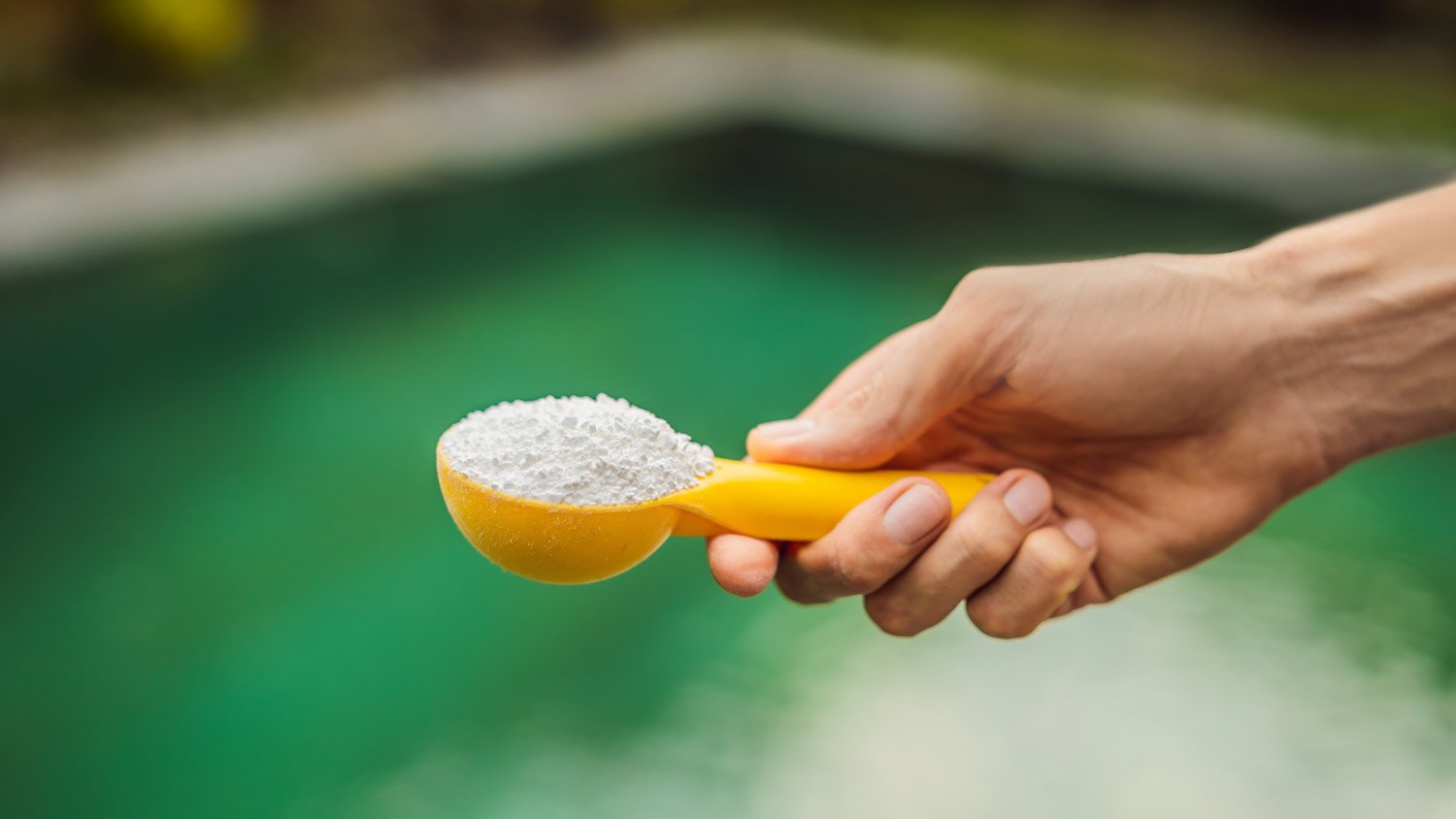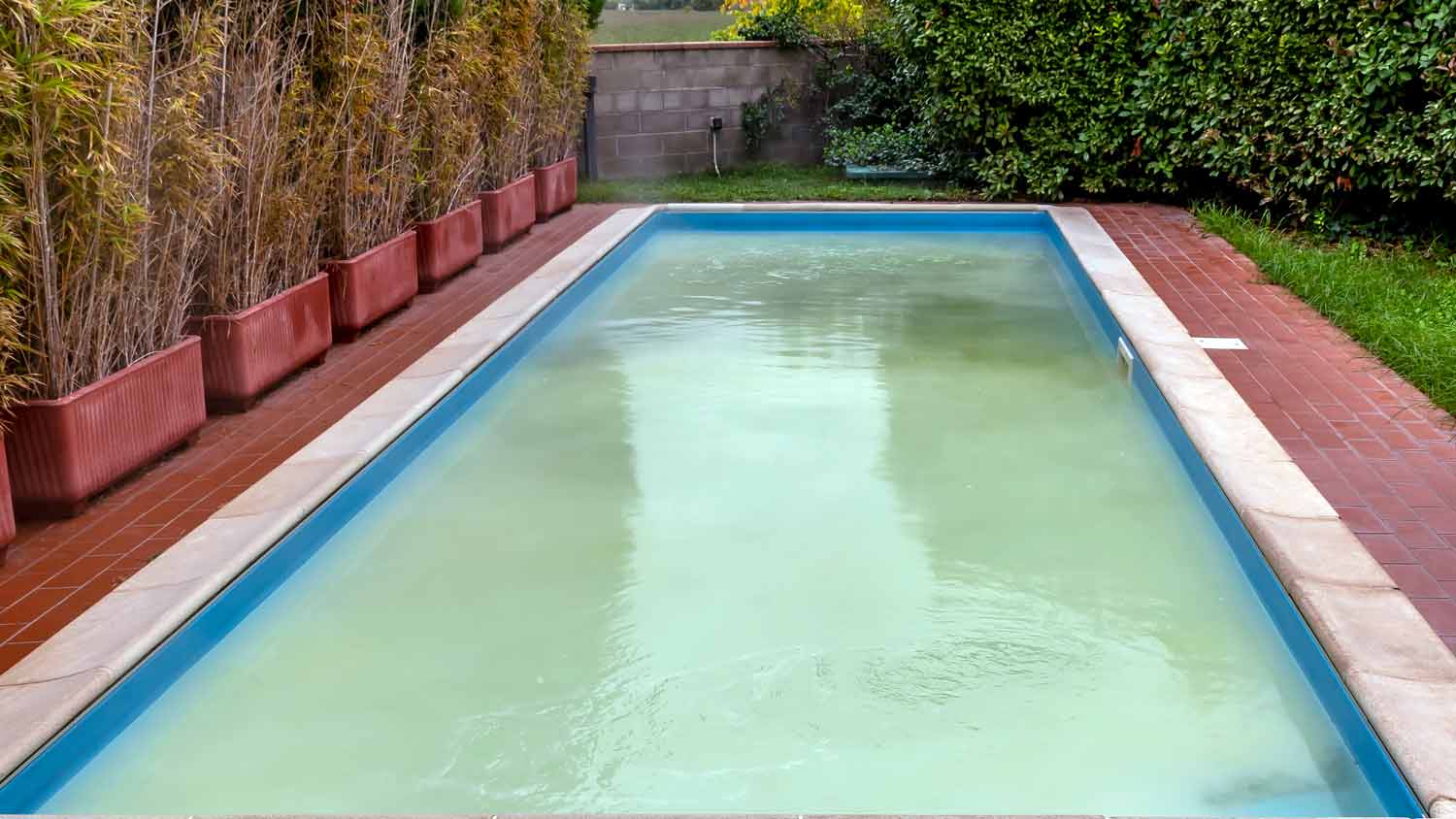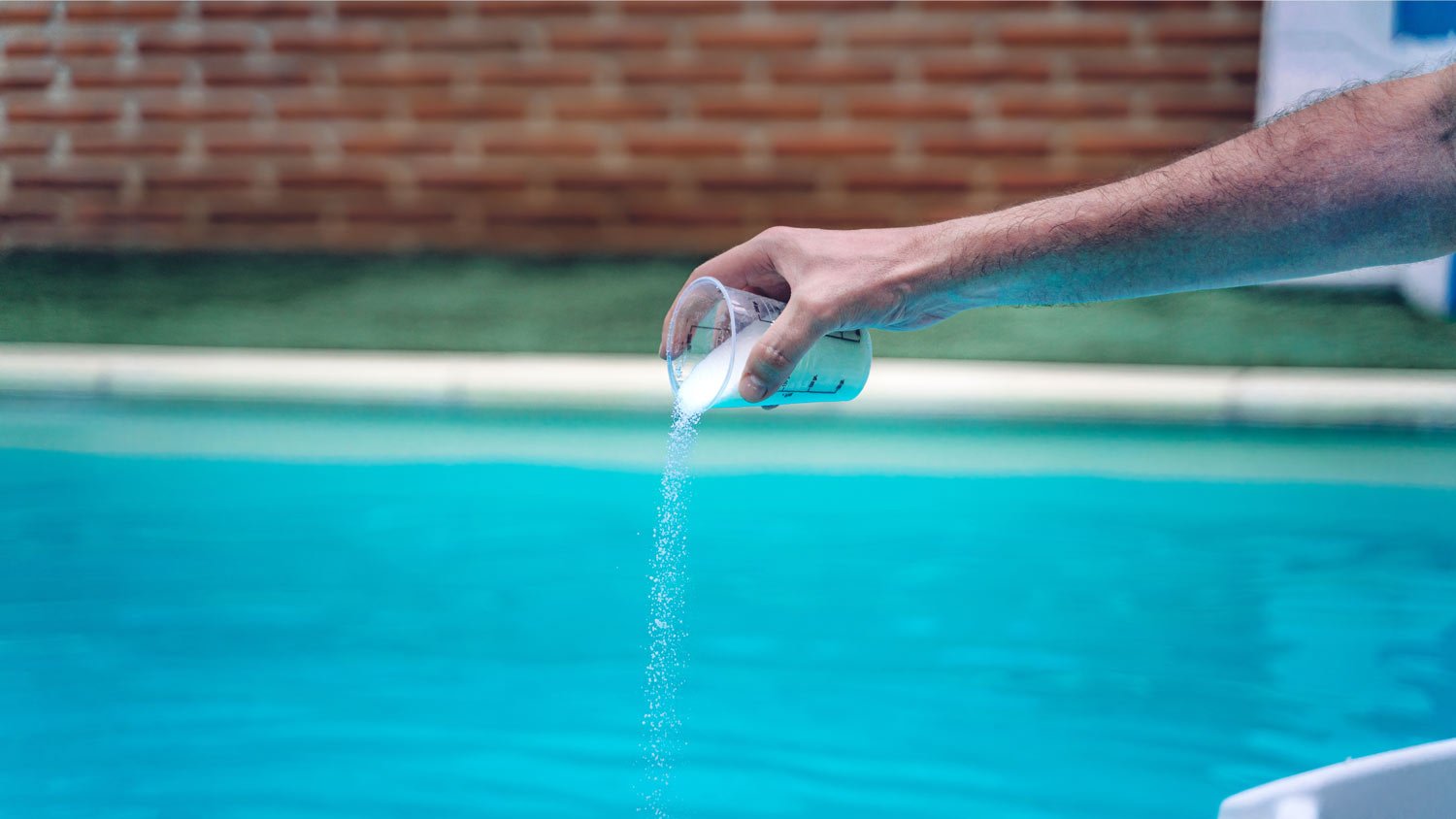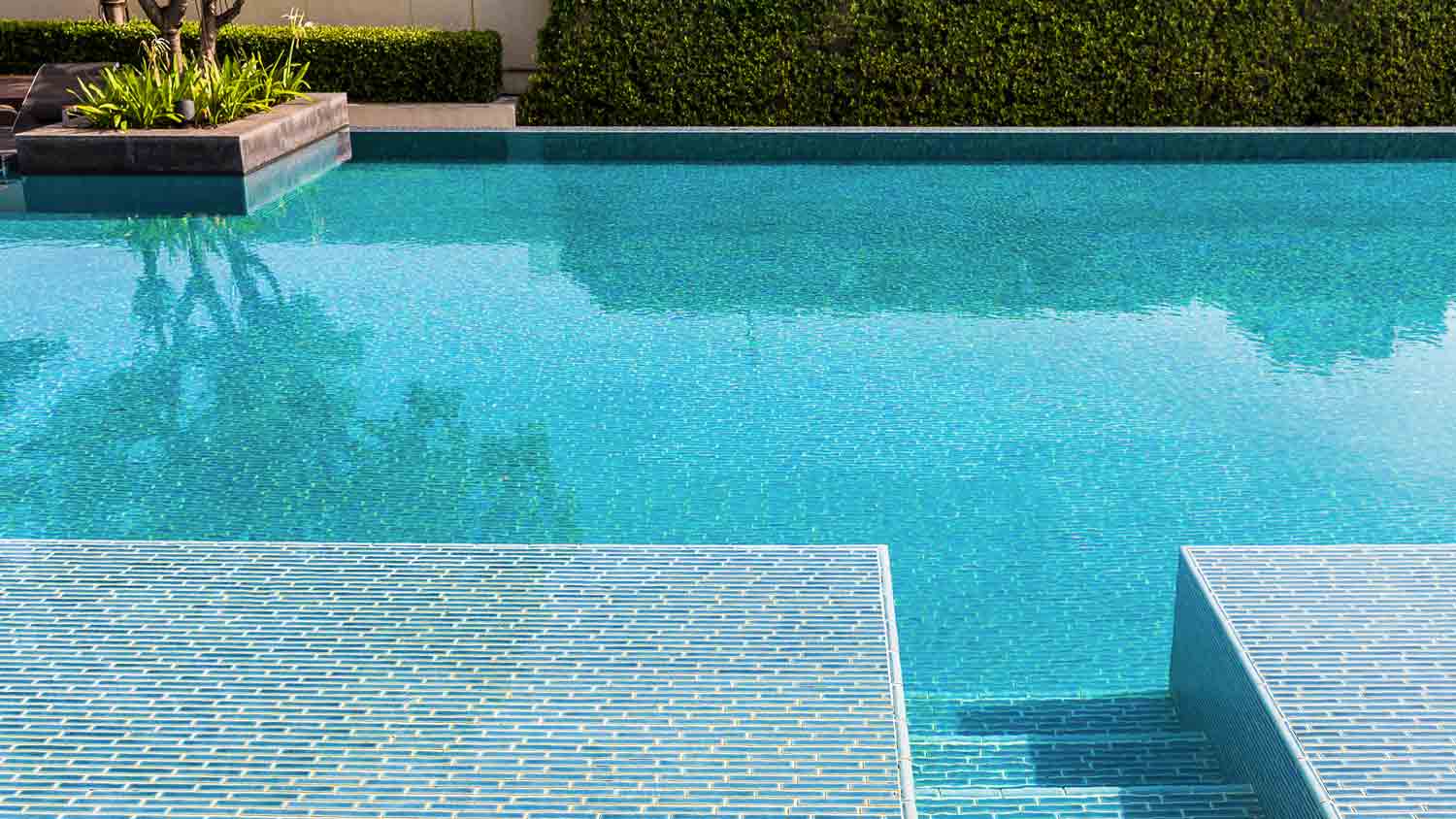
Looking to take a dip? Container pools are a rising, eco-friendly trend. This guide will help you understand shipping container pool costs.
Get your pool shockingly clean


Whether your pool is dirty, newly refilled, or the chlorine is getting stale, shocking your swimming pool is the best way to get it and keep it clean. These four types of pool shock will sanitize your pool water, help your chlorine work better, and remove algae and chloramines that can make it look and feel dirty.
| Type of Pool Shock | Biggest Benefit |
|---|---|
| Calcium hypochlorite | Powerful and fast-acting |
| Sodium di-chlor | Stable and slow to dissolve |
| Potassium monopersulfate | Safe to swim in 15 minutes |
| Sodium hypochlorite | Heavy-duty commercial shock |

Calcium hypochlorite, also known as cal-hypo, is the most popular type of pool shock method on the market. It’s powerful against tough algae and bacteria, fast, dissolves quickly, and it won’t increase cyanuric acid (CYA) levels in your pool. However, it can raise pool pH levels, and you should wait at least eight hours after treatment before swimming. It also burns off when exposed to UV rays, so always add it after the sun goes down.
If you need to know how to get rid of algae in a pool, calcium hypochlorite can be your best weapon. But you should be prepared for some water clouding, as it can temporarily cloud pool water that is warm or has high pH levels. It’s easy to apply, too, since you can broadcast it by sprinkling it directly over the pool surface and disperse granules with a pool brush or similar tool.
| Pros | Cons |
|---|---|
| Powerful and fast | Must rest 8 hours |
| Dissolves quickly | Add after sundown |
| Easy to apply | Can raise water pH |
Best for:
Pool owners that want a faster-dissolving shock
Pools with algae blooms, bacteria, and major contamination
Saltwater pools
Pools with normal-to-low pH

Also known as dichloro-s-triazinetrione or dichloroisocyanuric acid, sodium dichlor is a stabilized chlorine pool shock that dissolves slowly. Because of this, it’s a great choice for saltwater pools and pools with vinyl liners, fiberglass materials, or other surfaces that can’t handle calcium hypochlorite or commercial-strength shocks.
As well as a shock treatment, sodium dichlor is also a sanitizer and oxidizer. You can broadcast it directly on the water's surface, and you should add it after the sun goes down. A big upside of sodium dichlor is that it won’t cloud water; if you’re wondering how to clear cloudy pool water fast, this can be a good option to get and keep your pool water crystal clear. It will raise cyanuric acid levels and usually raises pH in pools, however, so you’ll need to test the water more often.
| Pros | Cons |
|---|---|
| Stable and slow to dissolve | Raises cyanuric acid |
| Sanitizes and oxidizes | Can increase pool pH |
| Won’t cloud water | Add after sundown |
Best for:
Saltwater pools
Pools with vinyl liners, fiberglass, or sensitive surfaces
Spas and hot tubs
Pools with low cyanuric acid
As a daily application along with routine shock treatments

Also known as non-chlorine shock, potassium monopersulfate, or MPS, is an oxygen-based alternative to chlorine pool shock. It helps the chlorine in pool water work better, and it can oxidize water and destroy contaminants. Often referred to as a shock-and-swim treatment, you can add potassium monopersulfate to your pool at any time of day or night, and the water will be ready for you to swim in 15 to 30 minutes. Since it doesn’t have the harmful byproducts that chlorine-based shocks can have, it won’t negatively impact the chemistry of your pool.
If your pool has algae or is prone to algae, however, you won’t want to choose this option. Not only does MPS not treat algae, but it can actually encourage algae growth because of the way it reacts with some pool contaminants.
| Pros | Cons |
|---|---|
| Non-chlorine shock | Won’t impact chlorine levels |
| Oxidizes, sanitizes | Won’t treat algae |
| Swim in 15 minutes | Expensive |
Best for:
Pool owners who don’t want to use chlorine
All pool surfaces
Pools that also use another water sanitizer (such as chlorine, bromine, or saltwater chlorine)
Hot tubs and spas
Indoor and outdoor pools

Sodium hypochlorite is also called bleach shock or liquid shock. It’s most often used in commercial pools, like those found in hotels, apartment complexes, health clubs, and public pool settings, and is rarely used in home pools. That’s because it’s hard to find in small amounts and is a commercial strength; commercial pool operators usually deliver it by truck.
It’s a popular choice for public and commercial pools because it’s a heavy-duty pool shock that is quickly dissolving and doesn’t need to be pre-dissolved like other types of chemicals.
| Pros | Cons |
|---|---|
| Heavy-duty shock | Rare in home pools |
| Quick-dissolving | Commercial strength |
| Delivered by truck | Bulk delivery |
Best for: Commercial pools and public pools, such as hotel pools, pools in apartment complexes or condo communities, health clubs, and athletic facilities
Pool shocking is adding chlorine or other chemicals to pools, hot tubs, and spas in a high enough concentration to destroy the combined chlorine (which has attached to and become weakened by impurities in the water) and raise the levels of free chlorine. Free chlorine will sanitize pool water, removing algae, chloramines, bacteria, and other contaminants.
The process of shocking usually involves adding 10 times the normal chlorine level. You can do it yourself if you understand the process and are willing to follow some simple directions. However, you can hire a local pool service near you to perform the task on a routine maintenance schedule.
Pool shocking keeps the water safe and clean; it removes bacteria and algae, eliminates combined chlorine, and raises the level of free chlorine to continue sanitizing the pool.
When should you shock your pool? These are the best times:
Before using a new pool for the first time
After cleaning and refilling your pool
When reopening your pool for the season or after a long period without use
After a pool party or heavy use
During hot periods when the pool water is very warm
After heavy rainfall
After the water has accumulated a lot of organic material, such as leaves in the autumn
From average costs to expert advice, get all the answers you need to get your job done.

Looking to take a dip? Container pools are a rising, eco-friendly trend. This guide will help you understand shipping container pool costs.

Need to update the look and feel of your pool? Use this guide on pool liner replacement cost to see how much this pool project will set you back.

Don’t let broken pool lights keep you in the dark. Learn about pool light replacement costs, including unit prices, labor rates, and add-ons.

A pool cover protects against debris and temperature changes while also preventing accidents. This guide breaks down the five main types of pool covers to choose from.

A pool liner can protect your pool from leaks and improve its appearance. Learn more about the different types of pool liners and which is right for your pool.

A broken pool light can be dangerous as well as inconvenient. Learn who to call to fix your pool light safely and correctly.